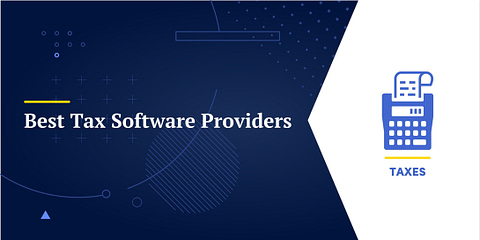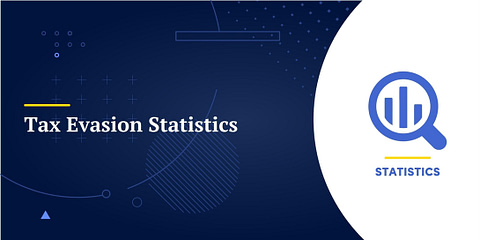As we enter the heart of the tax-filing season, is it too late to do anything about your taxes? Actually, there are options still available to make tax filing smoother and maybe save a few bucks in the process.
Tax Tips That May Help Reduce Your Tax Bill
Consider these tax tips as you tackle another round of tax return preparation.
1. Pull Your Records Together Now to Avoid a Late Filing Season Rush
Collecting your records now will make your life easier later this filing season.
Do you have all of your W-2s? How about your 1099-INT (for interest income), 1099-DIV (for dividend income), and 1099-B (for investments you sold this year) statements from your brokerage company? Did you pay college expenses? If so, you may be due a 1099-T from the college or university and possibly a 1099-Q from a 529 plan. State tax refunds from previous years will usually generate a 1099-G.
Making sure you have all of these forms on hand will prevent you from hurriedly tracking them down in April, which is stressful enough without this additional hassle. You will also have time to fix any errors. I had to have two corrections made this year, so review your forms closely.
2. Compile Your Potential Itemized Deductions
The Tax Cuts and Jobs Act passed in 2017 roughly doubled the standard deduction leading to a significant reduction in the number of taxpayers continuing to itemize their expenses. However, it may be worth the time to review your potential itemized deductions before simply assuming you’ll use the standard deduction.
Common itemized deductions include state and local taxes (limited to $10,000 per year), mortgage interest and charitable contributions.
Additionally, medical expenses above 7.5% of your adjusted gross income may also be deductible if you itemize. While an unusually large medical bill is certainly a bad thing, it may be enough to make itemizing possible for last year, especially if the medical issue came with a reduction in your income. This reduced income means the 7.5% floor is lower, making more of your expense deductible.
3. Contribute to Your IRA or Self-Employed Retirement Account
While some retirement plans, like 401(k)’s, require contributions to be made by December 31st each year, contributions to IRAs are allowed up to April 15th of the following year.
If you need an additional tax deduction and otherwise qualify, consider making a deductible IRA contribution. Should you find yourself in a lower tax bracket, a Roth IRA contribution may be a better idea. You won’t receive a tax deduction for the contribution, but the growth will be tax-free. Don’t underestimate the power of compounded growth. The Roth IRA can grow substantially over time!
Additionally, both IRA types may qualify for a “savers tax credit,” so even a Roth IRA contribution may reduce your current tax bill. If your 2021 adjusted gross income is under $41,500 as a married filer, you may be entitled to this credit.
A tax credit is more valuable than a tax deduction as it offers a dollar-for-dollar reduction in your tax liability. A tax deduction simply reduces the taxable income to which your tax rate is applied.
For example, a $100 tax credit reduces your tax bill (or increases your refund) by $100.
However, let’s assume you are in the 12% income tax bracket. A $100 tax deduction would only reduce your tax bill by $12 ($100 x 12%). Nice, but not nearly as beneficial.
Self-employed workers, including those with side gigs, may contribute to a retirement plan in early 2020 and receive a 2019 deduction.
For example, Simplified Employee Pension (SEP) plans allow contributions up to the due date of the return reporting self-employment income. The options can get tricky here, so if you have self-employment income, check with a qualified tax professional who is aware of your situation.
4. Health Savings Account Contributions Are Still an Option
Like IRA contributions, health saving accounts (HSA) contributions can be made up to April 15th of the following year.
HSA accounts offer a tax deduction for contributions, tax-free growth, and tax-free withdrawals if used for qualified medical expenses. This “triple tax savings” is unique to HSAs and offers eligible taxpayers significant benefits.
You must qualify to make an HSA contribution by being covered by a high-deductible health insurance plan, so verify with your benefits coordinator or health insurance provider to see if you’re eligible.
5. Don’t Forget About Catch-Up Contributions
Once a taxpayer reaches 50 years old (55 years old for HSA accounts), they may be eligible to contribute additional “catch-up” contributions for some account types, such as 401k, 403b, 457, HSA and IRA accounts. It’s not too late for 2021 “catch-up” contributions to IRAs and HSAs, so make them if you are eligible and have the funds available.
6. Use Any Remaining Flexible Spending Account Funds
Flexible spending accounts (FSA) allow for contributions that are free from income and Social Security taxes and must be used for child care or medical expenses. Sounds great and it is a nice benefit, especially if you don’t qualify for an HSA for pretax reimbursement of medical expenses.
However, unlike HSA’s, unused FSA balances are forfeited if not used during that tax year. Fortunately, many plans allow for medical expenses up to March 15th of the following year to be reimbursed with these unused FSA funds.
Should you have an unused balance, consider a trip to the eye doctor for new glasses or to the dentist for a checkup before the funds are lost for good.
7. Adjust Your Withholding for Next Year, if Needed
Here’s a tax tip for next year. If you discover that your 2022 resulted in a large refund or amount due, it may be smart to adjust your 2023 withholding to correct the problem.
If you are due a large refund, decrease your withholding. You can use that money better than the IRS! If you owe a significant amount, consider increasing your withholding to avoid a nasty April surprise next year.
























